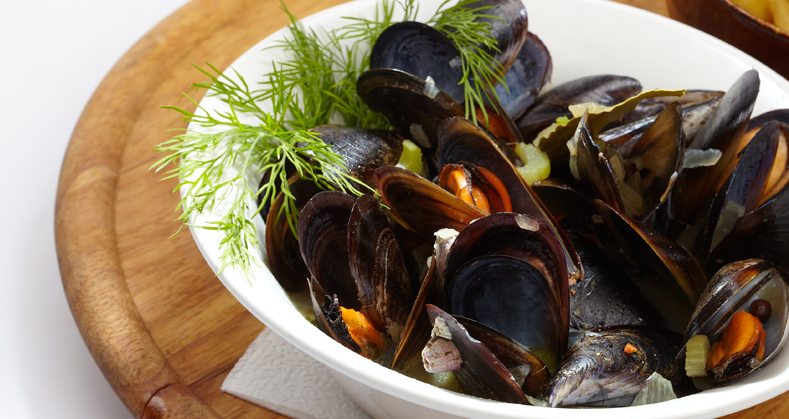Americans have started to make eco-conscious choices in their lives, from driving hybrids to reduce foreign energy dependence, to purchasing reusable water bottles to decrease plastic waste in landfills. The choices made at the dinner table can also have a meaningful impact on the environment. When it comes to buying seafood, sustainability has become an important consideration for many consumers. The challenge is that sustainability is not the only factor people are concerned with when buying seafood. Many are also looking to benefit from omega-3 fatty acid content, and to avoid the potential health risks from consuming seafood with high levels of environmental contaminants such as methylmercury. This nutritionbite will help you choose fish that are rich in omega-3’s, low in methylmercury AND not damaging to the environment.
Nutritional Facts and Figures
Sustainability
The issue of seafood sustainability has become more important than ever, since nearly 75% of the world’s fisheries are either fully fished or overfished.1 In an effort to help consumers support fisheries that are better for the environment, California’s Monterey Bay Aquarium has created “Seafood Watch Pocket Guides”. To download a regional pocket guide detailing the most sustainable seafood choices based on your geography, click here. By choosing sustainable seafood, you can help ensure the long-term survival of certain species, as well as the health of the surrounding ecosystems. For example, if you live on the West Coast, some of the most sustainable seafood choices include wild Alaska salmon, Pacific halibut, and Alaska sablefish; while if you live on the East Coast, alternative choices may be available to you such as Atlantic croaker or skipjack tuna. In both regions, fish to avoid for environmental concerns include orange roughy, Chilean seabass, and imported mahi-mahi, among others.
Omega-3 Content
Omega-3 fatty acids have been shown to help treat a variety of health conditions ranging from heart disease to depression. For more information on the health benefits of omega-3 fatty acids, see the nutritionbite titled Fishing For the Truth. Since the body cannot produce omega-3 fatty acids, it is essential that they are consumed through the diet. The recommended daily intake for omega-3’s for the average individual is at least 1g/day. While fish are the best source of these fats, some species contain more omega-3’s than others. Fatty, cold-water fish such as salmon, mackerel, lake trout, herring, sardines, and albacore tuna are among the richest in omega-3’s. The catch (ok, pun intended) is that the FDA and EPA recommend that the consumption of certain fish be limited due to environmental contaminants such as methylmercury.
Methylmercury
Mercury is a byproduct of various industrial activities (such as power generation from coal, garbage incineration, automobile recycling, and some mining and manufacturing processes) and once it gets in the air it is deposited on land and in water. When mercury enters water, microorganisms convert it to methylmercury, a more toxic form that can be harmful when consumed in high doses. Nearly all fish and shellfish contain traces of methylmercury. The risk of mercury toxicity from eating fish depends on both the amount of fish one consumes and the level of methylmercury in the fish. Large, predator fish have the highest levels of methylmercury because they consume many other fish below them on the food chain, thereby accumulating all the methylmercury in the fish they have eaten.
If a human consumes a large amount of methylmercury in a short period of time, symptoms such as muscle weakness, skin rashes, impairment of speech, hearing or vision, and mental disturbances can occur. As a result, the EPA and FDA provide recommendations limiting the amount of methylmercury that is safe to consume for young children, women who are or may become pregnant, and women who are nursing. These individuals should not consume shark, swordfish, king mackerel, or tilefish, and should limit tuna steak to a maximum of 6 ounces per week. Up to 12 ounces a week of fish that are lower in methylmercury can be consumed safely. All other individuals can eat 14 ounces a week of fish with methylmercury levels that average 0.5 ppm (parts per million). In time, normal levels of methylmercury are removed from the body naturally.
The following chart shows some of the most sustainable fish choices and their content of omega-3’s and methylmercury.
Alyse’s Advice
Research continues to show the importance of omega-3 fatty acids in treating and preventing certain illnesses. The best way to get these health benefits is by consuming at least two six-ounce servings of fish per week. While it is important to consume fish as part of a healthy diet, certain species accumulate higher levels of environmental contaminants such as methylmercury than others. Additionally, fish can be caught or farmed in ways that can harm other marine life or the environment. The Seafood Watch Pocket Guides are great sources to help you determine which fish are most sustainable, as well as which to avoid in order to limit your exposure to methylmercury and other contaminants.
1http://www.montereybayaquarium.org/cr/cr_seafoodwatch/sfw_aboutsfw.aspx
http://www.cfsan.fda.gov/~dms/admehg3.html
http://www.americanheart.org/presenter.jhtml?identifier=3013797

